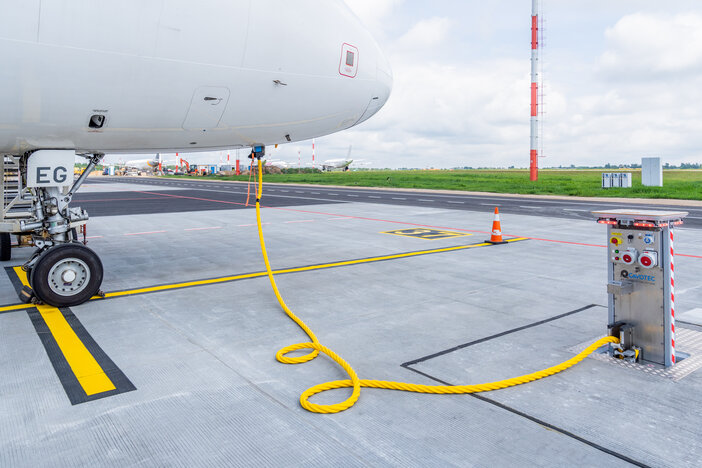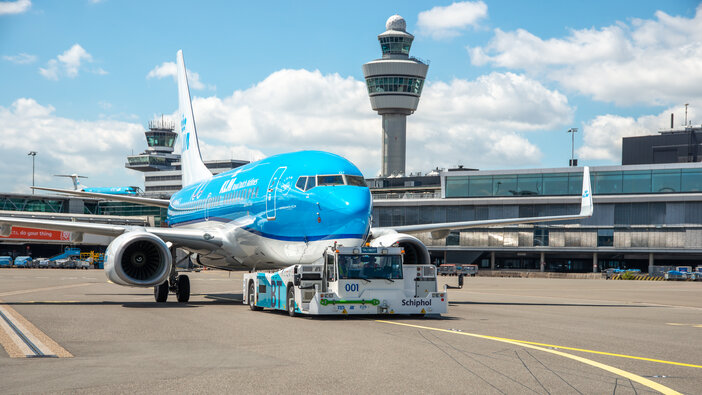Although the last year has been a time of unprecedented hardship for the airport industry, a rare note of optimism was sounded in November 2020 with Airports Council International Europe’s announcement of an expansion to its Airport Carbon Accreditation program, with the rollout of two further levels of achievement (4 and 4+).
To date, 333 airports have received Airport Carbon Accreditation – a figure representing nearly half of all global air traffic. The new measures were the first structural change to the program since its inception in 2009, and the updates are already proving popular. Three airports have been accredited at the new levels since their launch: New Zealand’s Christchurch Airport at Level 4 and Dallas/Fort Worth and Delhi’s Indira Gandhi International at Level 4+.
Passenger Terminal World spoke with the key developer of the new Accreditation levels, Marina Bylinsky, head of sustainability at ACI Europe, about why the new levels were brought in, what airports can do to achieve them, and the ongoing challenge of decarbonizing the airport industry.
This seems like a tough time to be asking airports to make extra efforts to decarbonize. Why was this expansion to the program introduced?
It’s more than 10 years since the program launched, and in the area of climate action a lot has happened in that time. I think for us the two most important triggers were the Intergovernmental Panel on Climate Change (IPCC) Special Report SR15 released in October 2018 calling on the world to limit global warming to below 1.5ºC and the adoption of the Paris Agreement in 2015. These political and scientific developments were a key driver for us to further develop our program. Another reason was that we already had several airports accredited at Level 3 or 3+, the highest levels of accreditation in the scheme’s original structure. These airports were looking for a new challenge, so introducing the new levels was a way to match the ambition of these airports.
One of the key differences with the new levels has to do with how airports set their emissions reduction targets. Can you explain the change?
Under the previous system, airports were free to define the emissions target in relative terms. For example, it could be the amount of CO2 emitted per passenger. The problem with this approach is that you can have a situation where you could be getting more efficient and emitting less CO2 per passenger and yet your total carbon footprint could still be going up because your passenger numbers are growing. So for the new levels, airports are required to define a target in absolute terms only. In other words, it needs to be based on a reduction objective that takes in the airport’s total carbon footprint.
How else do the new levels differ from what preceded them?
Another big difference is in the scope of the emissions reductions. For the original levels of the program, reduction targets were based exclusively on what we call Scope 1 and 2 emissions. These are emissions that fall under the direct control of the airport operator. These include emissions generated by ground vehicles owned by the operator or from the heating and cooling systems in terminal buildings. However, for Levels 4 and 4+ we’re allowing airports to include Scope 3 emissions. These are emissions that come from sources not under the operational control of the airport operator, but over which they still have a certain degree of influence. For instance, emissions from ground-handling operations run by a third party.
However, for airports to include these third-party sources they need to demonstrate that they really had an influence over the emission source. Otherwise you can have a situation where an airport operator might be able to claim a reduction that it had no part in achieving.

How do airports achieve Level 4+ accreditation?
The difference between 4 and 4+ is the same as the one we currently have between 3 and 3+. To gain the + level status airports must achieve all the other requirements of the level, and on top of that offset their residual emissions. The residual emissions are the airport’s carbon footprint that remains after it has made every effort possible to cut its CO2 output.
What evidence do airports need to provide to support their application for accreditation in the program?
It depends on the accreditation level that the airport is seeking, since there are different requirements for each level. But if we just look at Levels 4 and 4+, for instance, they need to submit their carbon footprint, a high-level commitment to absolute emissions reductions, a carbon management plan and a stakeholder partnership plan. Alongside this they need to provide supporting evidence that allows the verifier to check whether the figures in the carbon footprint are correct. This evidence could include invoices for the airport’s energy use, for example.
How is the airport’s application for accreditation assessed once it has been submitted?
This an important point because although ACI is the owner of the Airport Carbon Accreditation program, we’re an industry association so we cannot directly adjudicate on who is accredited – that wouldn’t be very independent. For this reason we appointed a third-party administrator (the global engineering consultancy WSP) to oversee the program and to adjudicate on whether to grant accreditation or not. Before the application goes to the administrator, however, it has to be reviewed by an independent verifier. So it’s a two-step process.
Besides a moral obligation to act on climate change, why should airports take part in the program?
I think the incentive mainly comes from the political and societal pressure to reduce emissions that airports face as part of the aviation sector. You need to be able to show that you’re taking strong action and that you’re aligned with international climate goals. So there’s a general expectation for airports to act, which I would say is an incentive in itself.
When you look at the airport sector, what do you see as the biggest challenges to cutting emissions?
Electricity is one of the major emission sources for airports, especially to power terminal buildings. To reduce your emissions related to electricity use, you can reduce consumption to a certain extent but you will still have a significant need for electricity. So airports need to switch to zero-carbon electricity sources. There are two ways of doing this: either you can buy green electricity or you can source a portion of your electricity needs from renewable electricity generated on-site. Both of these options bring constraints depending on where the airport is situated. The ability to buy green electricity varies depending on the electricity markets that you operate in.
In some countries in Asia, for instance, there are few or no opportunities to purchase it. Geographical constraints also apply to generating on-site renewables. For instance, the business case for solar energy can only be made in areas where there is sufficient sunshine.
Another challenge relates to specialist ground equipment such as snow-clearing machinery. There are some sophisticated, high-consumption machines and vehicles for which extremely low-carbon alternatives simply do not exist yet.

The Airport Carbon Accreditation program was a European initiative in the first place, and European airports still make up the largest portion of accredited airports within the scheme – 164 in total. For these latest iterations of the scheme there has been much more involvement from the international airport community. What can you tell us about different regions’ engagement with the program currently?
There are a lot of differences between the regions but then there are a lot of differences between individual airports within the same region, because airports are very local businesses. So definitely the challenges are not the same for everyone.
For instance, the availability of green electricity that I mentioned earlier is clearly something that varies across the world. Another thing is the level of public support. In some regions there is much more support for efforts to tackle climate change than in others, which is reflected in the policy and regulatory environment airports operate in. There’s also the question of resources. In some regions airports simply do not have sufficient resources to invest in decarbonization.
Finally, what impact do you see the pandemic having on the continued success of the Airport Carbon Accreditation?
In spite of the Covid-19 crisis, airports remain committed to sustainability and climate action. We have continued to see new entries and upgrades to Airport Carbon Accreditation since the outbreak of the pandemic. The challenge, however, is going to be the airports’ ability to invest in decarbonization and other sustainability initiatives moving forward. Throughout the crisis, airports have lost a tremendous amount of revenue. In this context, the continued implementation of climate action will depend on the availability of public support mechanisms and access to private capital.
This article was originally published in the April 2021 issue of Passenger Terminal World magazine.

